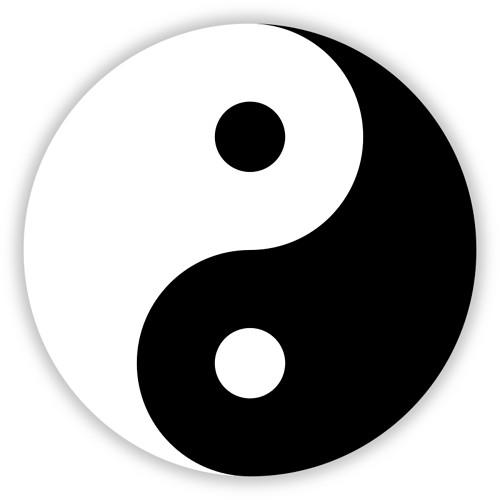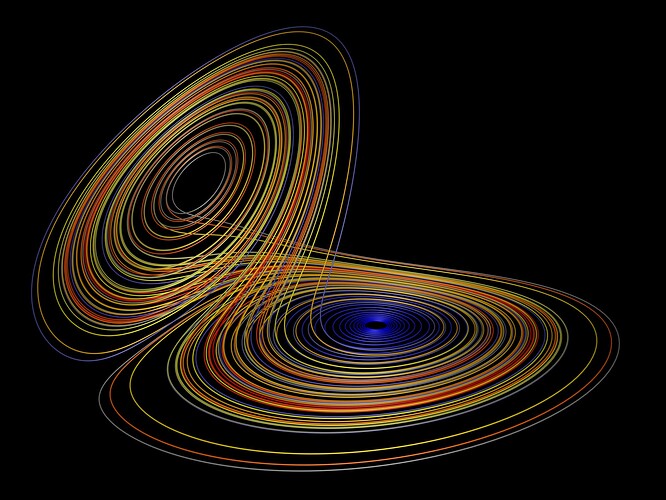Now where have I seen that image before?
Hi there!
Kind of haunting aren’t they. Hypnotic even.
Reversal therapy…

As for the physics…dunno, didn’t even understand the pictures… ![]()
What did you see
So entanglement is one of the most fundamental and strange properties of quantum mechanics. It means that 2 particles that are brought together in some way develop a strange kind of relationship whereby they begin to mirror each other. If one particle spins left, the other will spin right and so on.
Einstein and others thought that this happened at the moment of entanglement - somehow the particles “decide” between themselves who would be right handed and who would be left handed (for example) and that when one is subsequently measured, the other will - by prior arrangement - be doing the opposite.
It turns out that the big E was wrong about that. There is no agreement when the particles become entangled. Once entangled, if a particle is subsequently measured it makes a “decision” somehow at the moment of measurement (and not before) as to whether it feels more right handed or left handed in that moment. That decision is then instantaneously (and by an unknown mechanism) communicated to the other particle which obligingly starts doing the opposite. Even if that particle is located on the opposite side of the known universe. Or even if it means transmitting information backwards in time… ![]() This discovery led to last year’s Nobel in physics, if I recall correctly.
This discovery led to last year’s Nobel in physics, if I recall correctly.
It’s a real head-scratcher. Spooky action at a distance is what Einstein called it.
Anyway. Entanglement is generating a lot of interest currently (hence the Nobel) because of it’s use in quantum computing and various other gnarly bits of quantum mechanics, so people have been working out how to observe entangled particles. This is a new way to observe 2 entangled photons (or more precisely the wavefunction of the two photons).
The truly mind blowing part of that story is that the image of two entangled photons (something we have only just seen for the first time) looks exactly like the ancient taoist yin-yang symbol… which makes me wonder where that ancient symbol (5,000 years old?) comes from!
Thanks.
Wow - hadn’t heard of entanglement. (I think one of the photons must be in my head…)
The symbol - I suppose if something that seems impossible is shown to happen, it must be possible that something else that seems merely improbable can happen along with it!
Was it you who spotted the symbol?
Maybe the ancient symbol depicts some mathematical object or orbit, like a strange attractor
giving it something in common with the representation of the dynamic of the particles?
Love the image and the concept behind strange attractors. The Lorenz attractor is a favourite. It always struck me as a strange coincidence that it was Lorenz’s work that gave rise to the term butterfly effect, and the Lorenz attractor looks so much like a butterfly. Lovely
Actually, it always pays to read the original article and not just the news story. Turns out that the authors inserted the Yin Yang image into one of the beams to show the capability of transmitting information with entanglement - so it’s not a surprise to see it there! I should have gone to the source earlier!
Oh well. It was a good story and amused me for a day ![]()
Hi folks, I didn’t follow the science but didn’t Rupert Sheldrake hypothesise about the strange attractor element of some particles possibly explaining the way in which different creatures can develop odd abilities at exactly the same time as the same creatures do on the other side of the earth - birds starting to break into the tops of milk bottles was one example! I think another was how suddenly mice started to easily find the centres of a maze straight away! Or am I confusing it with something else?
cheers
“The wave function, a central tenet in quantum mechanics, provides a comprehensive understanding of a particle’s quantum state.”
I’m not sure what they mean here by ‘comprehensive understanding’. Comprehensive suggests total understanding and in fact from what I know that is completely bogus, and probably impossible.
Niels Bohr and Heisenberg said such understanding CANNOT be known because of the nature of measurement and David Bohm said (the so called 'Ontological Interpretation) that our understanding will always be limited though we can propose other models than the Bohr/Heisenberg so called ‘Copenhagen Interpretation’ which Bohm did (he proposed a new ORDER, the implicate order, a holistic interpretation/model of physics in contrast to the ‘reductionist’ model).
That said, I find the image interesting of course. But let’s keep in mind it’s only an image, it’s not ‘reality’. We need images and metaphors to talk about everything but they really break down when trying to talk about relativity and quantum mechanics.
And me.
Though I think the media had discovered remote entanglement independently ![]()
The article (I wasn’t brave enough to attempt reading the journal piece it summarises) seems to be describing an experimental technique. This allows researchers to infer information about the appearance and other attributes of a thing by analysing how that thing emits light. By distorting/interfering with the emission one can build up a representation of the thing. The image at the top, reproduced in the OP, was produced by applying that technique to a yin and yang symbol. So this has nothing to do with any fundamentally yin-and-yang-ness of entangled photons.
Depending on your browser, if you hover/right-click on the image the ‘alt’ text clearly states this:
Biphoton state holographic reconstruction. Image reconstruction. a, Coincidence image of interference between a reference SPDC state and a state obtained by a pump beam with the shape of a Ying and Yang symbol (shown in the inset). The inset scale is the same as in the main plot. b, Reconstructed amplitude and phase structure of the image imprinted on the unknown pump. Credit: Nature Photonics (2023). DOI: 10.1038/s41566-023-01272-3
The images are not of entangled photons per se, sorry.
EDIT: As a P.S. to the above, I found their analogy about shoes confusing. The article’s author asserts that one can infer attributes of one member of a pair from an analysis of the other. Which is what the experimental technique can do, apparently.
‘Leftness’/‘rightness’ and colour are given as examples. Shoes are made by humans and many of us know that a ‘left’ shoe is a mirror of the ‘right’. But these attributes are socially constructed, as are the shoes themselves. I don’t believe that prehistoric shoe wearers made such distinctions because the shoe worn on their ‘left’ foot was identical to (rather than mirroring) it’s pair. More to the point, photons are not man-made and might be identical, might be mirrored, might be like two interlocking pieces of a jigsaw, I dunno…
I replied to the OP before seeing this, lol

